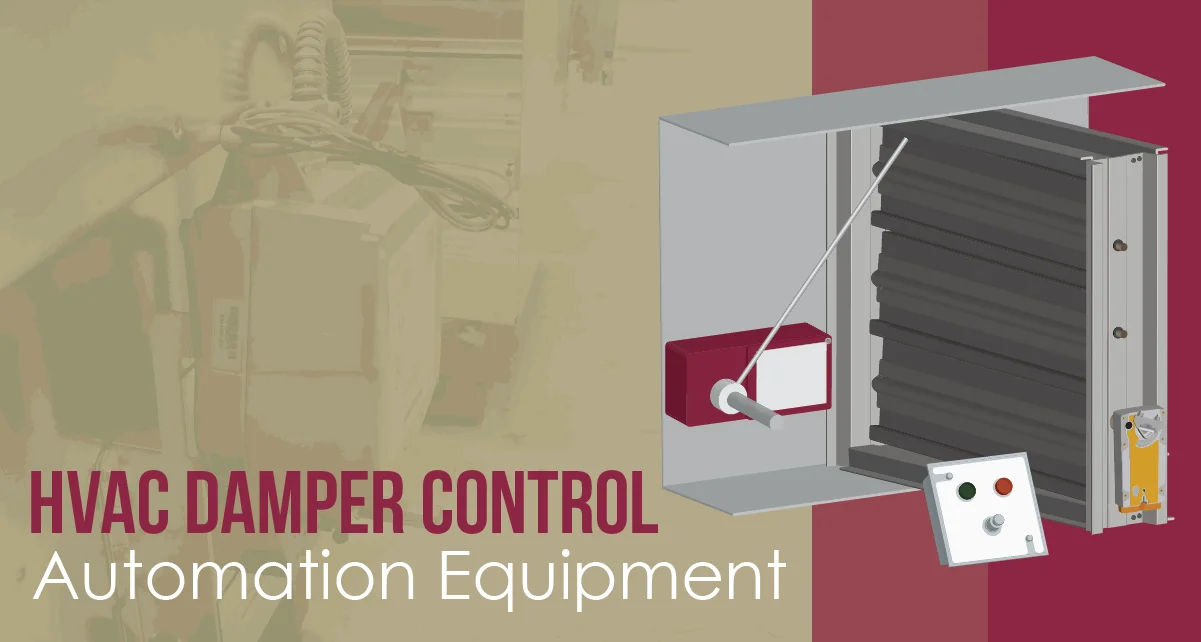Take control of your HVAC system with automated control dampers. Learn how the right equipment can give you full HVAC damper control. Read all about it on the MCDLG Newsstand.
Controlling Airflow with Dampers
It takes careful planning to design a large HVAC system. The finished system needs to move air through ducts to every room in the building. This includes moving through a maze of ductwork to get the air to the right temperature, and to the right place, whenever the thermostat kicks on.
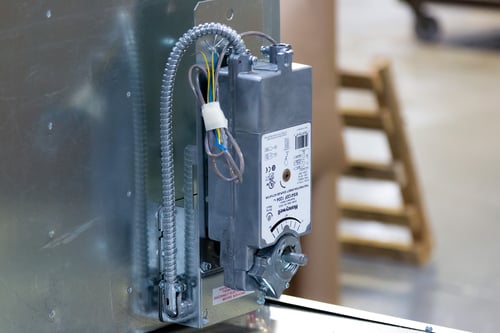
The HVAC system needs to be a fine-tuned machine with efficient air control dampers. Every damper needs to open and close at the right time, to ensure air continues to flow through the system. There are ways to automate these dampers and keep the air moving.
Need dampers for an upcoming project? Contact MCDLG today and tell us what you need.
Electric and Pneumatic Actuators
Louvers and dampers can achieve automation with the right actuators. Actuators control blade rotation. These devices are installed on the damper’s driving blade, or a blade used to lead the other blades of the unit. When the actuator rotates the driving blade, the damper linkage will translate that rotation to all blades. There are several types of actuators, which employ different means to rotate the driving blade.
For instance, a pneumatic actuator will use compressed air to drive blade rotation. You can synchronize dampers with pneumatic actuators by timing them to open and close at the same time.
Pneumatic actuators are considered a cheap option for automating dampers, assuming the building has a central air compressor.
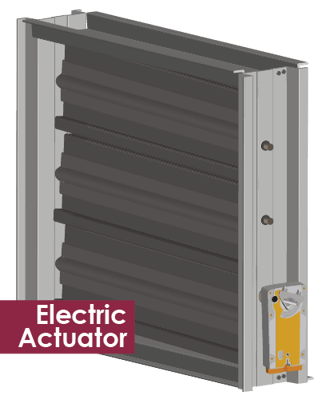
Electric actuators are the best for automation because they use an electric motor to drive blade rotation. This electric motor drives blade rotation. By default, the blades will rotate to fully open when the motor has power.
When power stops, an internal spring will rotate the blades back to the closed position. Electric actuators can also be configured to close when power is applied, also known as "power closed, spring open". A modulating actuator will rotate the damper’s blade between several preset angles.
They can be connected to a central computer, so that every connected damper operates when the system needs it. This provides greater control over airflow dampers, and over the system.
Electric actuators require a power source to operate, which will require a trained electrician to wire the actuator to power. However, the benefits outweigh the initial costs.
.jpg?width=420&height=288&name=Electric%20Actuator%20(Resize%2c%20HS).jpg)
When connected to a central computer, electric actuators can synchronize damper action across your HVAC system.
Position Indication Switches
What happens when airflow dampers don't open when they are supposed to open? When a problem like this occurs, maintenance crew need a way to quickly diagnose the issue and fix it.
This can be a daunting task when there are several control dampers installed in one section of the system. Position indication switches can help pinpoint the problem.
A position indication switch is a device tied to the damper’s driving blade. This switch can be integrated with the electric actuator, or it can be a discreet unit. When the damper opens, the switch will follow the driving damper blade and indicate when the damper is in the fully open position.
The switch will also indicate when the damper is fully closed. It may seem redundant to have a position indication switch on a damper, but they are especially useful should a failure occur.
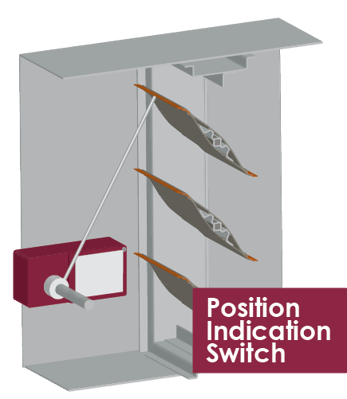
As a discreet unit, the position indication switch acts as a second check of the damper’s blade position. If the damper blade slips and fails to rotate. This can happen if the damper’s blade axle comes loose. When this happens, the actuator may read that the damper is open when it’s still closed.
A discreet position indication switch will read that the damper is closed, because it can be tied directly to the damper’s blade. The switch will only read “open” if the damper’s blade is physically in the open position. A standard position indication switch will read one of two positions, open or closed. There are switches available for monitoring multiple blade positions, for modulating dampers.
Remote Test Boxes
It’s important to perform regular testing and maintenance. Problems with one component can affect other components further down the line. With the right equipment, technicians can locate issues in the system and fix them.
Remote test boxes can help technicians test dampers without needing access to the damper’s actuator. The test box is wired to the actuator and placed in an easily accessible area. Technicians can press the button on the test box to operate the damper.
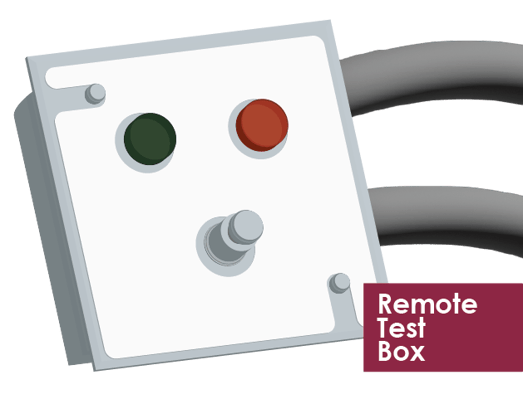
Remote rest boxes are designed to interrupt power to the actuator, to simulate power loss. This will cause the damper to open or close, depending on its power loss state. When paired with a discreet position indication switch, technicians can easily determine if the damper is working without needing direct access to the damper.
With a test box, you no longer need to disassemble everything to test the actuator. It is as simple as pressing a button.
Automating with the Right Accessories
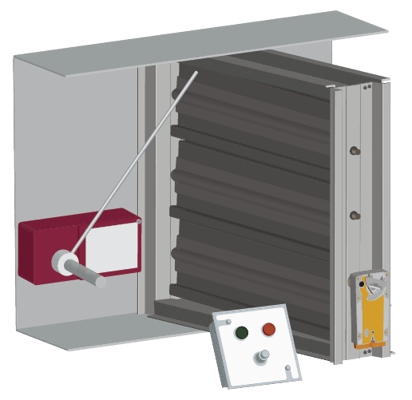
You can gain more control over your HVAC system with the right tools, ensuring the system runs at its best throughout the year. Consider adding electric actuators and tie your dampers to a central control system. Then, consider adding position indication switches and remote test boxes to help with maintenance. These components contribute to a smarter, more efficient HVAC system.
A Quick Word about our 517-518

Designing an automated HVAC system? Consider adding an electric actuator to the Arrow United 517-518 steel control damper. The 517-518 uses steel airfoil blades to move air efficiently through your system, with minimal pressure drop. Arrow United Industries offers several options for our dampers, to tailor each unit to meet your needs. Contact us today about the 517-518 steel control damper, or browse our full line of non-UL dampers on Product Pro.
For more on dampers, check out these other articles on the Newsstand:
- Options for Control Dampers
- The Condenser - Open and Closed, DPI Switches
- Air Performance and Control Dampers
Need some help? Do you have a specific question about your current job? Or do you need a head start on your next project? Talk to MCDLG! We can bring our 50+ years of experience to the table. We are here to help you.
Need help right away? Contact MCDLG today. We are ready to help you.
.webp?width=91&height=70&name=MCDLG%20Logo%20(Resize).webp)
